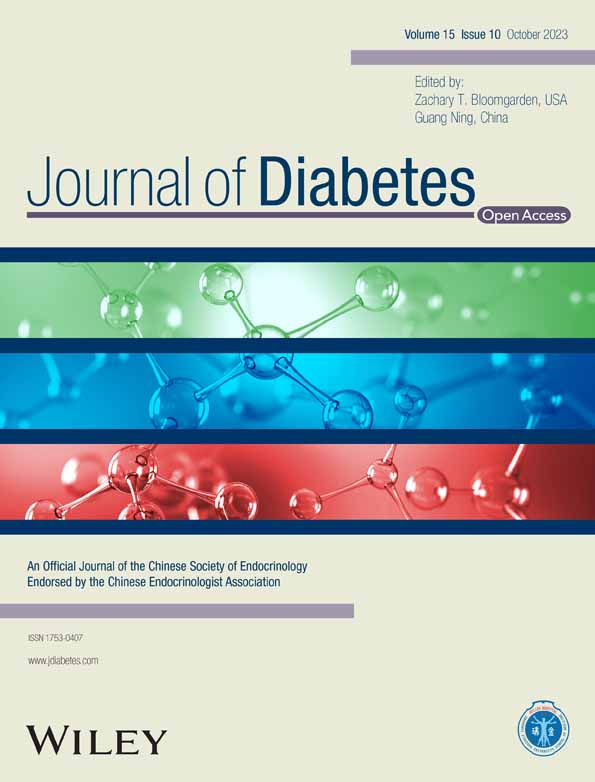Associations of blood biomarkers with arterial stiffness in patients with diabetes mellitus: A population-based study
糖尿病患者血液生物标志物与动脉硬化的关系: 一项基于人群的研究
Yong-Qi Liang and Rui Zhou equally contributed to the work and therefore, are considered co-first authors.
Abstract
enBackground
Arterial stiffness contributes to additional cardiovascular risks in diabetic patients by triggering the loss of vascular and myocardial compliance and promoting endothelial dysfunction. Thus, prevention of arterial stiffness is a public health priority, and the identification of potential biomarkers may provide benefits for early prevention. This study investigates the relationships between serum laboratory tests and pulse wave velocity (PWV) tests. We also investigated the associations between PWV and all-cause mortality.
Methods
We examined a panel of 33 blood biomarkers among diabetic populations in the Atherosclerosis Risk in Communities Study. The carotid-femoral (cfPWV) and femoral-ankle PWV (faPWV) were measured using an automated cardiovascular screening device. The aortic-femoral arterial stiffness gradient (afSG) was calculated as faPWV divided by cfPWV. Biomarker levels were log-transformed and correlated with PWV. Cox proportional hazard models were employed for survival analysis.
Results
Among 1079 diabetic patients, biomarkers including high-density lipoprotein cholesterol, glycated hemoglobin, high-sensitivity troponin T, cystatin C, creatinine, and albuminuria were significantly correlated with afSG (R = 0.078, −0.193, −0.155, −0.153, −0.116, and −0.137, respectively) and cfPWV (R = −0.068, 0.175, 0.128, 0.066, 0.202, and 0.062, respectively). Compared with the lowest tertile of afSG, the risk of all-cause mortality was lower in the highest tertile (hazard ratio 0.543; 95% confidence interval 0.328–0.900).
Conclusion
Certain biomarkers related to blood glucose monitoring, myocardial injury, and renal function significantly correlated with PWV, suggesting that these putative risk factors are likely to be important atherosclerosis mechanisms in diabetic patients. AfSG may be an independent predictor of mortality among diabetic populations.
摘要
zh背景: 动脉僵硬导致糖尿病患者心血管疾病风险增加,其通过引发血管和心肌顺应性的下降以及促进内皮功能失调起作用。因此,预防动脉硬化成为公共卫生的优先事项,识别潜在的生物标志物可能对早期预防有益。本研究旨在探讨血清实验室检测与脉搏波速度(PWV)检测之间的关系,并研究PWV与全因死亡率之间的关系。
方法: 在动脉粥样硬化风险社区研究的糖尿病患者中,我们检测了一系列33种血液生物标志物。颈动脉-股动脉PWV(cfPWV)和股动脉-踝动脉PWV(faPWV)的PWV采用自动心血管筛查设备进行测量,主动脉-股动脉的动脉硬化梯度(afSG)按faPWV除以cfPWV进行计算。将生物标志物水平进行对数转换后与PWV进行相关性分析。采用Cox比例风险模型进行生存分析。
结果: 在1,079名糖尿病患者中,包括高密度脂蛋白胆固醇、糖化血红蛋白、高敏肌钙蛋白T、胱抑素C、肌酐和尿白蛋白等生物标志物与afSG(R=0.078,-0.193,-0.155,-0.153,-0.116和-0.137,分别为)和cfPWV(R=-0.068,0.175,0.128,0.066,0.202和0.062)显著相关。与afSG的最低三分位数相比,最高三分位数的全因死亡风险较低(危险比0.543; 95%置信区间0.328-0.900)。
结论: 与血糖监测、心肌损伤和肾功能相关的某些生物标志物与PWV显著相关,提示这些潜在的危险因素可能是糖尿病患者的关键动脉粥样硬化机制。AfSG可能是糖尿病患者死亡的独立预测指标。
CONFLICT OF INTEREST STATEMENT
There are no conflicts of interest to declare.
Open Research
DATA AVAILABILITY STATEMENT
The data of this study can be requested from the Atherosclerosis Risk in Communities Study (https://biolincc.nhlbi.nih.gov/studies/aric/).




